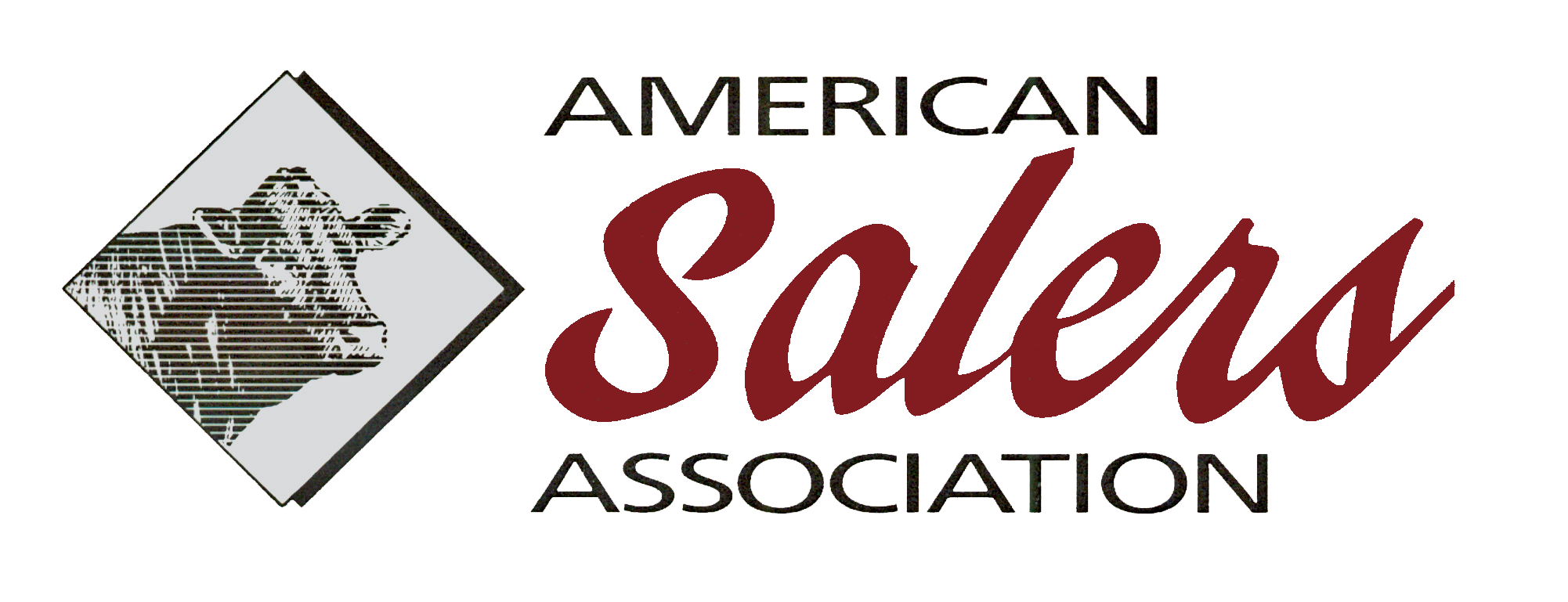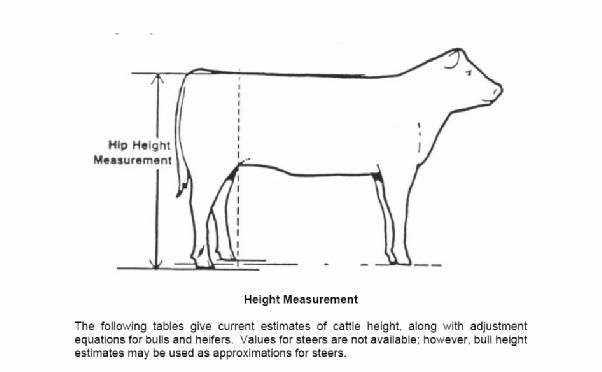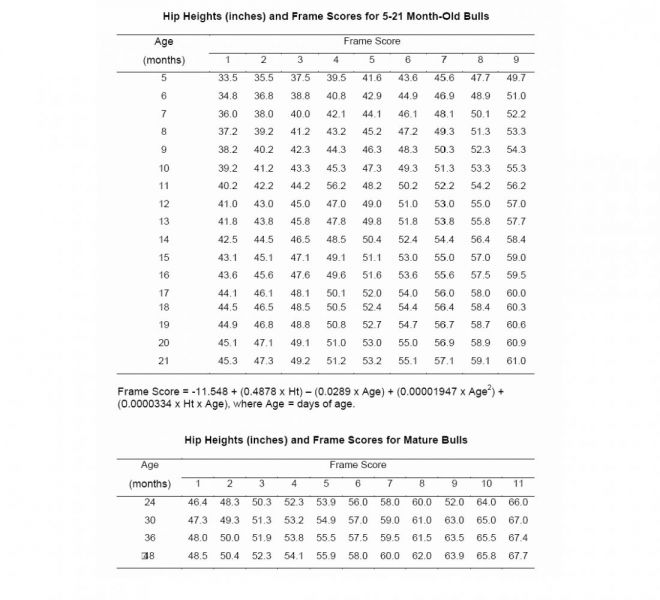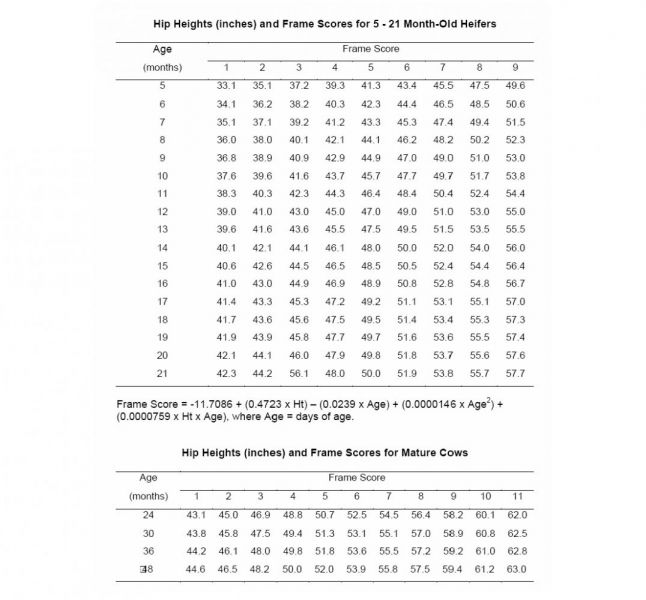Frame score. Hip height converted to frame score is a linear measurement that helps cattle producers evaluate lean-fat ratio potential of an individual animal in a performance program. No one frame size will be best for all feed resources, breeding systems, and markets. Large-framed animals tend to be heavier at all weights, leaner, and later maturing. Small framed animals tend to be lighter, fatter, and earlier maturing.
Frame scores can be monitored to maintain body size, fatness level, and maturing rate within the optimum ranges dictated by the resources, breeding system, and market specifications of a herd.
Frame score is a convenient way of describing the skeletal size of cattle. With appropriate height/growth curves, most animals should maintain the same frame score throughout their life, regardless of when they are evaluated. However, frame scores may change for animals that mature earlier or later than average for their breed.
The recommended site for hip height measurement is a point directly over the hooks. This measurement should be adjusted to a weaning age-endpoint of 205 days and to yearling age endpoints of 365, 452 or 550 days. The same age range guidelines as for weaning and yearling weights should be used. It is recommended that the actual hip height and adjusted hip height be printed in national cattle evaluations rather than the height ratio. Height Measurement The following tables give current estimates of cattle height, along with adjustment equations for bulls and heifers. Values for steers are not available; however, bull height estimates may be used as approximations for steers.
Rev. May, 2009




